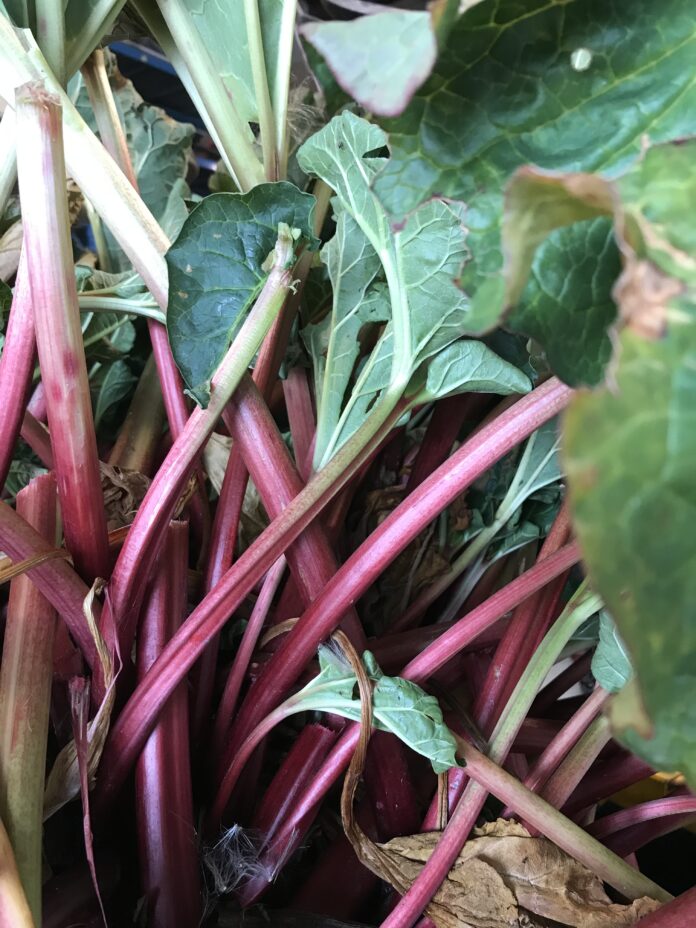By Jackie Bantle
Saskatchewan Perennial Society
At this time of the year, very few people are thinking about planting vegetables. The garden harvest has been in full swing for at least one month and the idea of planting your garden is a distant memory or a dream for the future. There are some perennial vegetables that can still be planted during this gardening season.
One of the perennial vegetables that is often harvested and replanted late in the season is horseradish. Although it may be difficult to find a horseradish plant at the garden center at this time of the year, your neighbors and friends may be harvesting their horseradish this fall or you may find some freshly dug roots at your local farmer’s market. A freshly dug root, about the thickness of a pencil, is ready for planting. The root should be planted deep, with the top tip of the root approximately 5 cm below the soil line. Water the root in well but do not allow the root to sit in water. Leaves should emerge in spring. Established horseradish plants often develop stalks of white flowers in early summer. Remove the flower stalks to encourage the plant to put its energy into the roots rather than seed production. Do not harvest any of your horseradish root in the first year after planting. Horseradish flavor is best in fall, after one or two light frosts. Horseradish can be very invasive: use a physical barrier to contain it in the garden.
Rhubarb is another vegetable that can be planted in the fall. Although the plant that you purchase at your garden center may be small, remember that a mature, healthy rhubarb plant can easily grow to fill a space that is 1m long and 1m wide: allow plenty of space in your garden for your rhubarb plant. Rhubarb prefers rich, fertile soil with good drainage and full sun. Do not harvest any rhubarb stalks the first year after planting. During the second year after planting, harvest only a few stalks during the growing season. It takes at least two years for the plant to get well established before a significant harvest can occur. Early spring or fall is a good time to transplant or split rhubarb plants. If your mature rhubarb plant has started to lose vigor and petioles have become small, it may be time to divide your plant. Use a sharp spade to divide the crown into two or three pieces, ensuring that there are significant roots and at least one leaf bud (preferably two or three) on each piece. Removing flower stalks during the growing season is recommended as developing flowers and subsequent seeds develop at the expense of further root and shoot growth.
The third perennial vegetable that can be planted in the early fall is asparagus. I always recommend planting asparagus seedlings in a new asparagus patch however, seedlings may be difficult to find at this time of the year. If you are planting roots, be sure that the roots are from a reliable, disease-free source. Fusarium crown and root rot is a common disease in established asparagus patches: this disease is spread through infected roots. Common signs of fusarium crown and root rot in asparagus is loss in vigor, stunted plants, yellowing leaves and brown rotting roots. Once the disease shows up in your asparagus patch, the root should be removed or tilled and asparagus should not be grown in the same location for a minimum of five years.
Rogue asparagus plants have become an invasive species along the riverbanks and wetland areas. Older varieties of asparagus like ‘Martha Washington’ and ‘Viking’ are prolific seed producers. It is highly recommended that only hybrid male asparagus cultivars are planted (they do not produce seed). Excellent asparagus cultivars that perform well in northern locations include ‘Guelph Millennium’, ‘Jersey Giant’ and ‘Jersey Knight’. Remember that asparagus plants should be well established before any significant harvest can occur, plants should be at least three years old. Asparagus prefers to grow in full sun and sandy to sandy loam soil.
If you decide to do some fall perennial vegetable planting, be sure to place a stake or marker where you have planted. I can’t keep track of how many times I forgot that I planted something in the fall only to dig it up in spring with my rototiller. But…. maybe you have a better memory that me.
Happy gardening!
This column is provided courtesy of the Saskatchewan Perennial Society (SPS; saskperennial@hotmail.com). Check our website saskperennial.ca) or Facebook page (facebook.com/saskperennial). With the end of the pandemic hopefully in sight we have reserved the Hall at the Forestry Farm for our Fall Plant Exchange, September 12, 2021.


